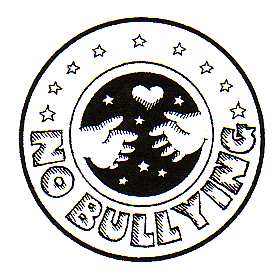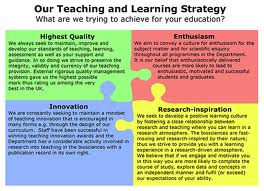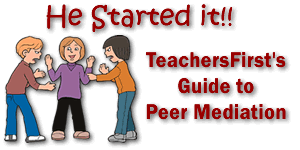Critical thinking! High LEVEL questioning!
These are all things that we as teachers want to see our students accomplish in our classroom! An artifact bag takes the students back in time to when those artifacts were around. The get to see and touch these artifacts. The students must guess when they think the artifact was around, where, and even why... It is a very engaging activity for students, and once they have made these discoveries they can do more research and further their learning.
MY ARTIFACT BAG!!!
Topic: The PilgrimsGrade: 4
New York State Standards
Social Studies Standard 1:
History of the United States and New York
Students will: use a variety of intellectual skills to demonstrate their understanding of major ideas, eras, themes, developments, and turning points in the history of the United States and New York
Key Idea 1: The study of New York State and United States history requires an analysis of the development of American culture, its diversity and multicultural context, and the ways people are unified by many values, practices, and traditions.
Performance Indicator: Students will know the roots of American culture, its development from many different traditions, and the ways many people from a variety of groups and backgrounds played a role in creating it.

 The topics I chose to work with is pilgrims, from their journey and why they traveled, to their lives in America and forming the thirteen colonies. I chose the first artifact, the journal of William Bradford because his journal is seen to be one of the single most important sources of information from the pilgrims and Plymouth colonies. William Bradford is a man that lived during this time period so all that is in this journal is of eye witness accounts and it is full of facts. The journal describes the first 30 years of the Plymouth colony, it is a complete story of the colony from the day it was founded and the voyage to America. Williams account is one from a true pilgrim, he was a passenger on the Mayflower and was even elected the governor of the colony. The journal itself allows the students to see actual entries written in Bradford's hand writing, it also gives the students an opportunity to see the difference between how we speak now from how they spoke hundreds of years ago. It allows the students to dive back into the time period of the pilgrims and the journey they made to start the 13 colonies. The second artifact that I chose is an actual letter from the pilgrim Robert Cushman, being that he was such an important figure during this time a letter from him deemed important. Like the journal it gives the students a perspective of the time from the eyes of the pilgrims themselves. It also shows the hardships that occurred and how these people stayed strong to fight for their beliefs.
The topics I chose to work with is pilgrims, from their journey and why they traveled, to their lives in America and forming the thirteen colonies. I chose the first artifact, the journal of William Bradford because his journal is seen to be one of the single most important sources of information from the pilgrims and Plymouth colonies. William Bradford is a man that lived during this time period so all that is in this journal is of eye witness accounts and it is full of facts. The journal describes the first 30 years of the Plymouth colony, it is a complete story of the colony from the day it was founded and the voyage to America. Williams account is one from a true pilgrim, he was a passenger on the Mayflower and was even elected the governor of the colony. The journal itself allows the students to see actual entries written in Bradford's hand writing, it also gives the students an opportunity to see the difference between how we speak now from how they spoke hundreds of years ago. It allows the students to dive back into the time period of the pilgrims and the journey they made to start the 13 colonies. The second artifact that I chose is an actual letter from the pilgrim Robert Cushman, being that he was such an important figure during this time a letter from him deemed important. Like the journal it gives the students a perspective of the time from the eyes of the pilgrims themselves. It also shows the hardships that occurred and how these people stayed strong to fight for their beliefs.  The book "The Thanksgiving Story" is a very informative story about the pilgrims and their journey. I found it a wonderful source for students because it describes how the pilgrims traveled and why. The reason was described that pilgrims are people who travel far distances for their religion. The first chapter dives deep into the journey on the ships, the conditions and the hardships. It even describes how due to the condition of the ship they had to return, but started their journey again on the ship that was still intact. The book then takes the students on the journey of the pilgrims landing on the new land, how they started to build homes, gather food, and their meeting with the Indians. The last chapter in the book is about the feast that took place between the pilgrims and the Indians, so the students have a better understanding of how thanksgiving came about. The book is engaging and very informative, a wonderful story to share with the students when starting a new unit on the 13 colonies.
The book "The Thanksgiving Story" is a very informative story about the pilgrims and their journey. I found it a wonderful source for students because it describes how the pilgrims traveled and why. The reason was described that pilgrims are people who travel far distances for their religion. The first chapter dives deep into the journey on the ships, the conditions and the hardships. It even describes how due to the condition of the ship they had to return, but started their journey again on the ship that was still intact. The book then takes the students on the journey of the pilgrims landing on the new land, how they started to build homes, gather food, and their meeting with the Indians. The last chapter in the book is about the feast that took place between the pilgrims and the Indians, so the students have a better understanding of how thanksgiving came about. The book is engaging and very informative, a wonderful story to share with the students when starting a new unit on the 13 colonies.  The web site, Kids Konnect is a wonderful site for students to go and explore. This can be used when the students are asked to develop their own knowledge about the pilgrims and do some research. I would use this site to have students work collaboratively to create a poster about pilgrims. The site in general is very well laid out, you can chose a grade and numerous topics within social studies. The section on pilgrims includes a list of quick and easy facts for the students to read. On the bottom of the page students have an array of resources that they can use to develop an even deeper knowledge of the pilgrims and their lives. It provides sites with virtual tours, more information, and real life reenactment videos for the students to watch. This site is very engaging and full of information for student to learn. I would not hesitate to use this site for other topics in social studies.
The web site, Kids Konnect is a wonderful site for students to go and explore. This can be used when the students are asked to develop their own knowledge about the pilgrims and do some research. I would use this site to have students work collaboratively to create a poster about pilgrims. The site in general is very well laid out, you can chose a grade and numerous topics within social studies. The section on pilgrims includes a list of quick and easy facts for the students to read. On the bottom of the page students have an array of resources that they can use to develop an even deeper knowledge of the pilgrims and their lives. It provides sites with virtual tours, more information, and real life reenactment videos for the students to watch. This site is very engaging and full of information for student to learn. I would not hesitate to use this site for other topics in social studies.
References
Belzer, J. (2011, ). Pilgrims. Retrieved from KidsKonnect.com website: http://www.kidskonnect.com/subject-index/16-history/275-pilgrims.html
Blake, N. (2010, ). New jersey state library. Retrieved from New Jersey Colonial Ordinances website: http://law.njstatelib.org/new_jersey_colonial_ordinances
Dalgliesh, A. (1954). The thanksgiving story. New York, New York: Atheneum Books For Young Readers.
Johnson, C. (1994, ). Letters written by the pilgrims. Retrieved from May flower history website: http://www.mayflowerhistory.com/index.php
(2005, May 18). Of Plymouth Plantation: The journal of William Bradford. Retrieved from Pilgrim Hall Museum website: http://www.pilgrimhall.org/bradjour
 During this class activity we were asked to get into groups of five and each member of the group was to take on an important role of gathering as much information possible on the Native American Indians that were assigned. We worked through google docs and by collaborating with out mastery group in class. The mastery group is the group that you go to that incorporates the people that have the same topic as you. You work with these people to get a good idea of what you want to teach your peers about so that everyone is learning the same thing. It is also helpful so that if one person forgets a piece of information the mastery group can help.
During this class activity we were asked to get into groups of five and each member of the group was to take on an important role of gathering as much information possible on the Native American Indians that were assigned. We worked through google docs and by collaborating with out mastery group in class. The mastery group is the group that you go to that incorporates the people that have the same topic as you. You work with these people to get a good idea of what you want to teach your peers about so that everyone is learning the same thing. It is also helpful so that if one person forgets a piece of information the mastery group can help. Once we were done working in our mastery groups we got back into our main group. The main group is the people that we will be teaching out topic to and learning about their topic. My group made FANTASTIC handouts for one another. Each hand out was different, some people use publisher and other used processor. It was great to see the different ideas that we all had. We all made sure t o include captivating pictures and colors, which made the boring information seem a lot more interesting.
Once we were done working in our mastery groups we got back into our main group. The main group is the people that we will be teaching out topic to and learning about their topic. My group made FANTASTIC handouts for one another. Each hand out was different, some people use publisher and other used processor. It was great to see the different ideas that we all had. We all made sure t o include captivating pictures and colors, which made the boring information seem a lot more interesting.




























